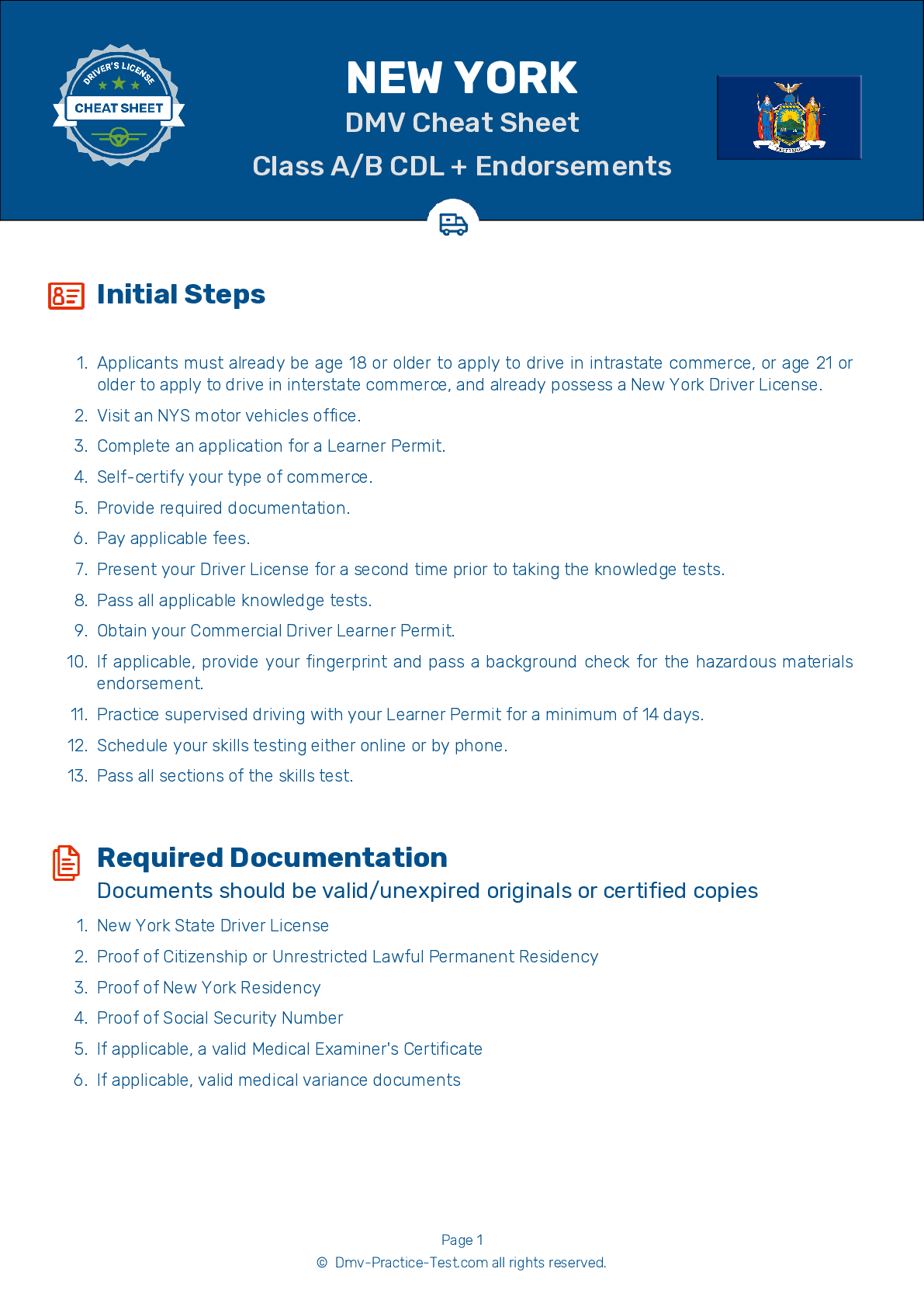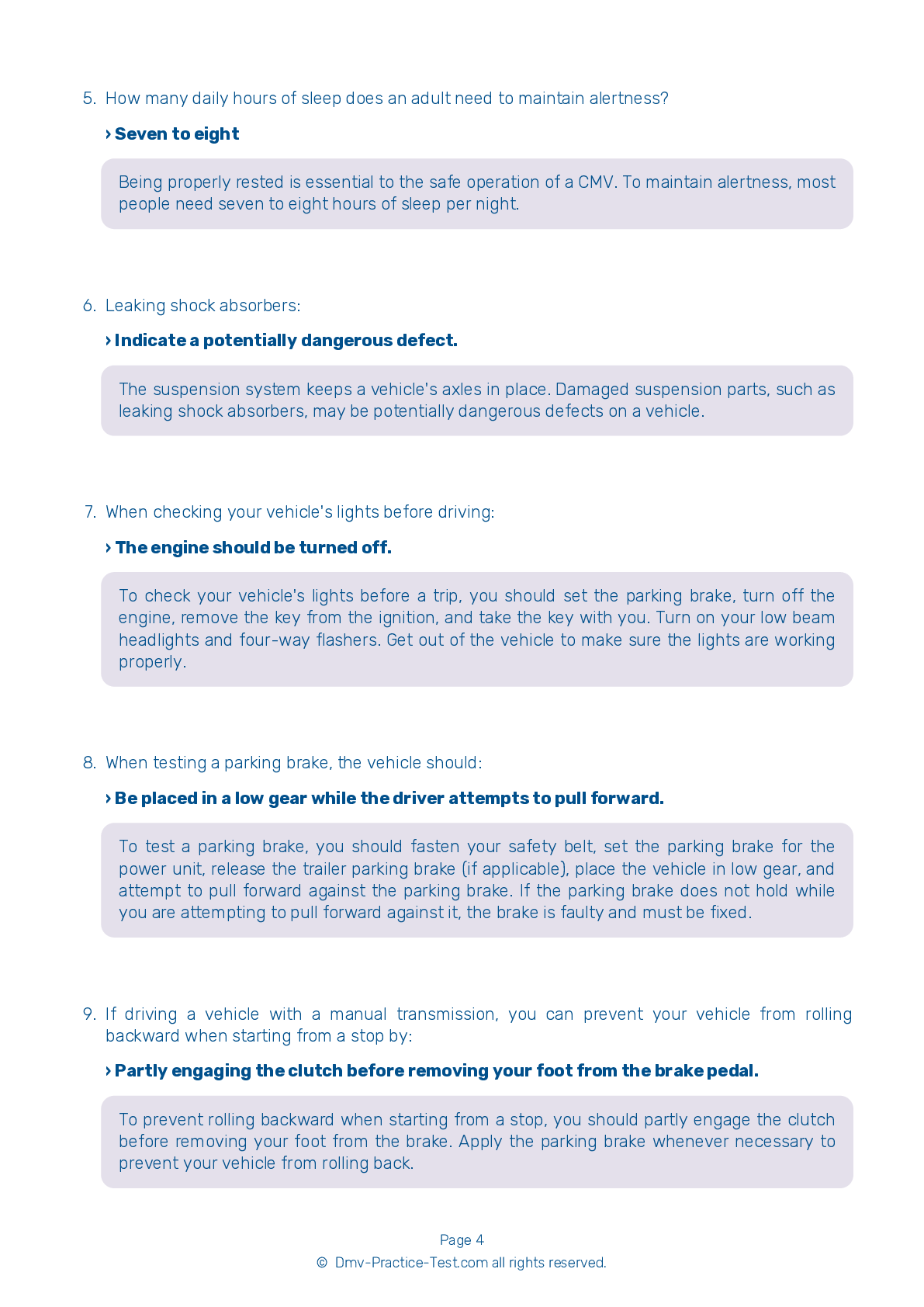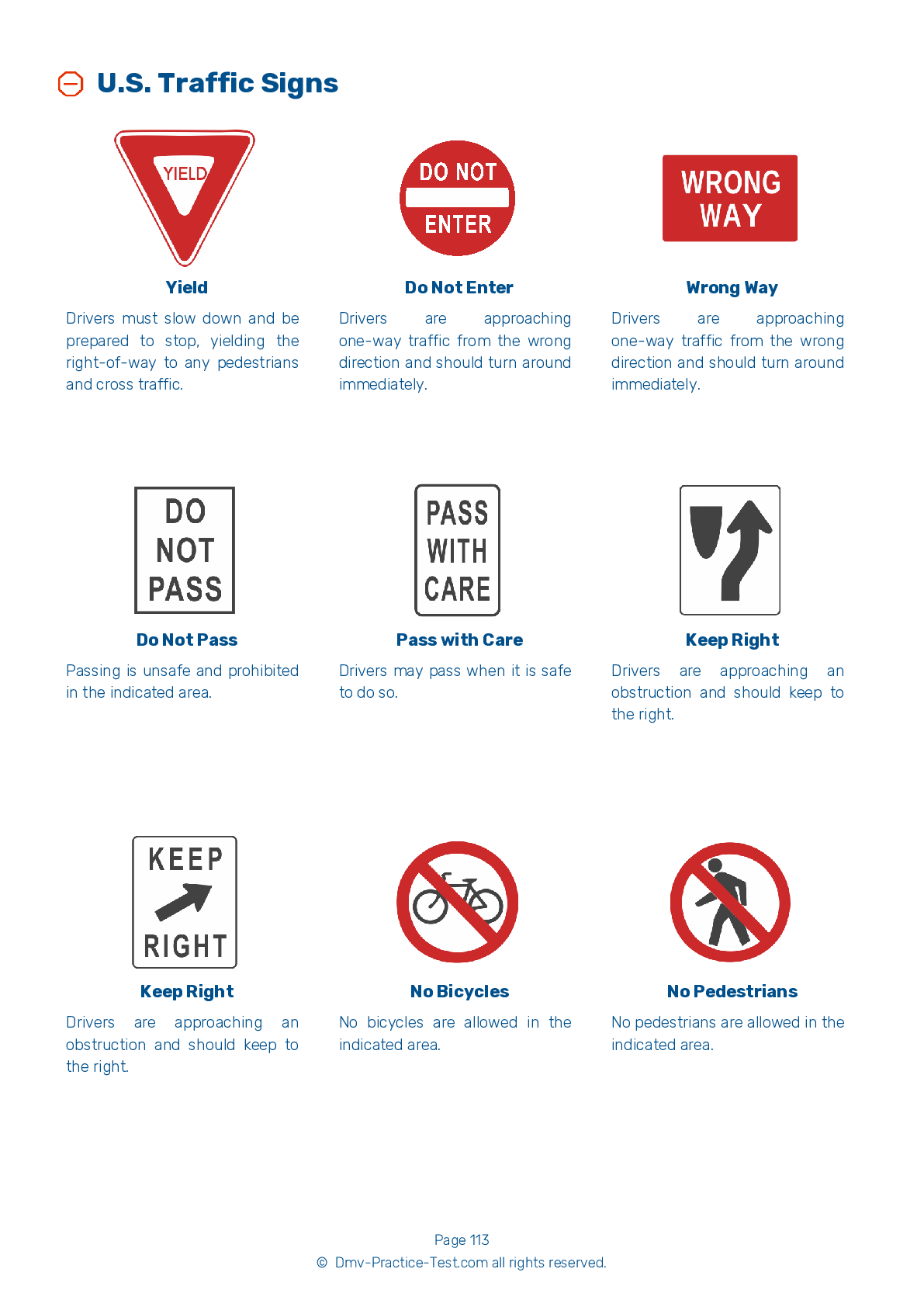Double #2
Double Triple Test | New York 2025 #2 Page 2 of 3
Train for FREE with our New York CDL double triple practice test online. The official exam test consists of several obligatory parts, with all of them checking your knowledge of different blocks of road rules. If you need to obtain a NY CDL double triple license in 2025, practice as much as possible. Free sample tests published on our website will help you check and improve your knowledge and boost your grades. Please bear in mind that DMV requirements may vary from state to state.
20
16
20
8 . Why should your mirrors be adjusted to show the road behind you as well as part of your vehicle?
The driver should be able to see the reflection of surrounding vehicles on the trailer.
Part of your vehicle should be visible in your mirrors so that you have a point of reference when judging how close other drivers and objects are to your vehicle.
9 . To prevent your tires and engine from overheating while you are driving in especially hot weather, you should:
Drive with your windows down.
The faster you drive, the hotter your engine and tires will become. When it is very hot, you can help prevent this overheating by decreasing your speed.
10 . Don't spend too much time looking at a single mirror because:
The mirror may not provide an accurate view of the road.
Check you mirrors frequently while driving, but check them quickly. Staring at one mirror for too long can cause you to drive a long distance without knowing what is ahead.
11 . When traveling with cargo, you must make sure the cargo is secure:
Only after coming to a hard stop.
Cargo should be inspected before beginning a trip, within the first 50 miles of the trip, and every three hours or 150 miles traveled. The driver of a truck transporting cargo is responsible for the cargo being safely secured throughout the trip.
12 . When preparing to drive in the winter, be sure to check:
All of the above.
Before driving during the winter, make sure to check your defrosting and heating equipment, coolant and antifreeze levels, wipers and washers, tire tread, tire chains, lights, reflectors, and exhaust system. Clear ice and snow from all windows, mirrors, hand holds, steps, deck plates, and radiator shutters. Make sure the winterfront is not closed too tightly.
13 . A low air pressure warning signal should activate:
When tank pressure falls below 5 psi.
In an air brake system, a low air pressure warning signal must come on if air pressure in the tanks falls below 60 psi. This warning signal may come in the form of a light, a buzzer, or a wig wag.
14 . One way to overcome the challenges of blind spots is to:
Avoid using your mirrors.



